How to build a pond – a step by step expert guide
Learning how to build a pond and adding one to your garden will transform your garden
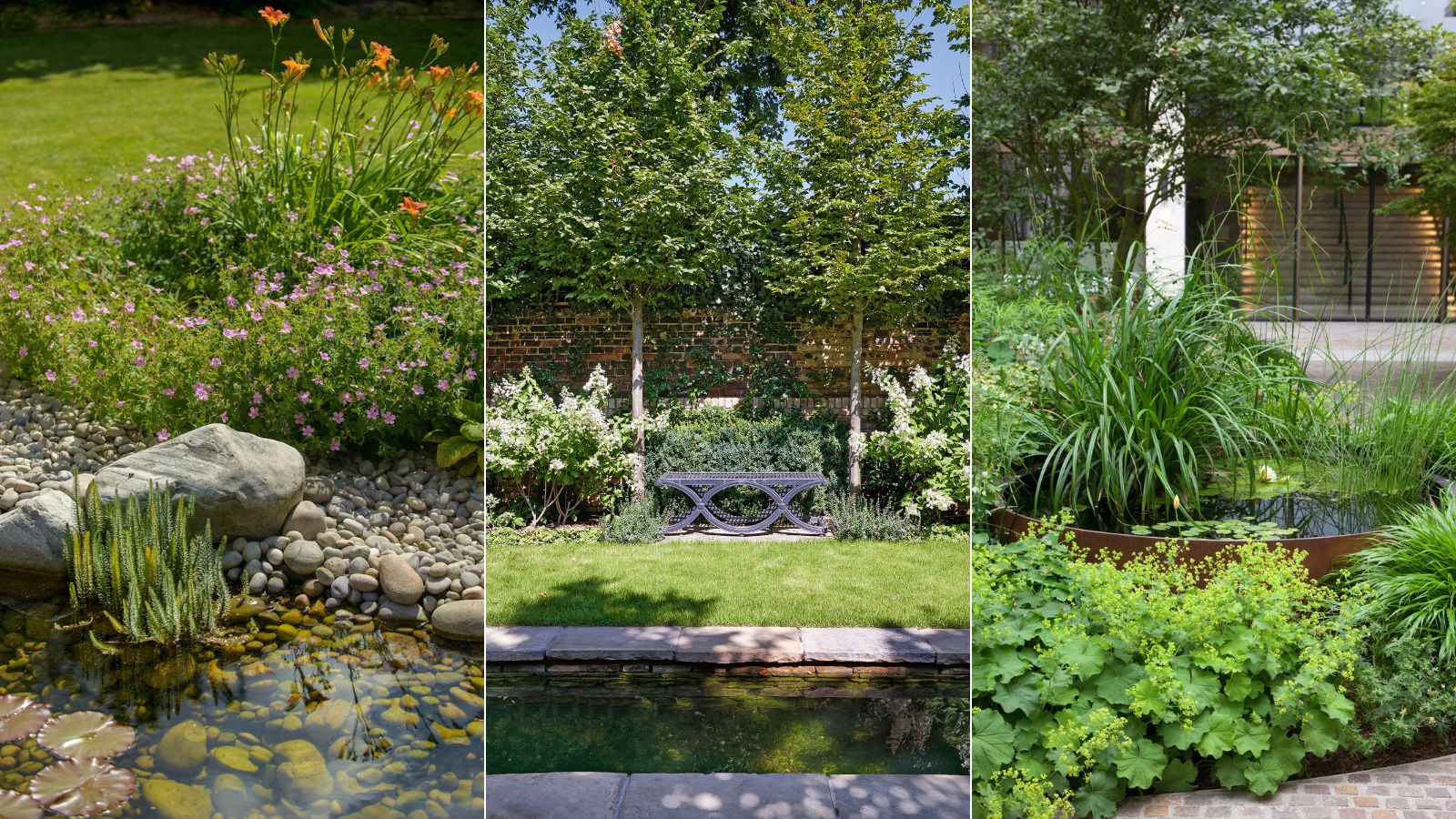

If you want to make one change in your garden, then learning how to build a pond is a must. Not only will it benefit wildlife, but it can also evoke serenity, movement, and a relaxing soundtrack to your plot and create a thriving environment for a limitless array of wildlife.
Every animal, from tiny insects to larger mammals, needs a source of water in order to thrive. Including garden pond ideas in your outdoor space can dramatically increase the bio-diversity of your backyard ideas and as a result, will help your garden to flourish.
‘Insects are the base of the food chain and though they are less iconic than some of our familiar mammals, a water source will increase the number and the variety of insects in your garden very significantly’, says Barry Chambers founder of Garden Design Guru. Insects are vital to the well-being of our garden and ‘more diversity brings greater stability and less chance of a proliferation of any pest or even disease on your patch.’
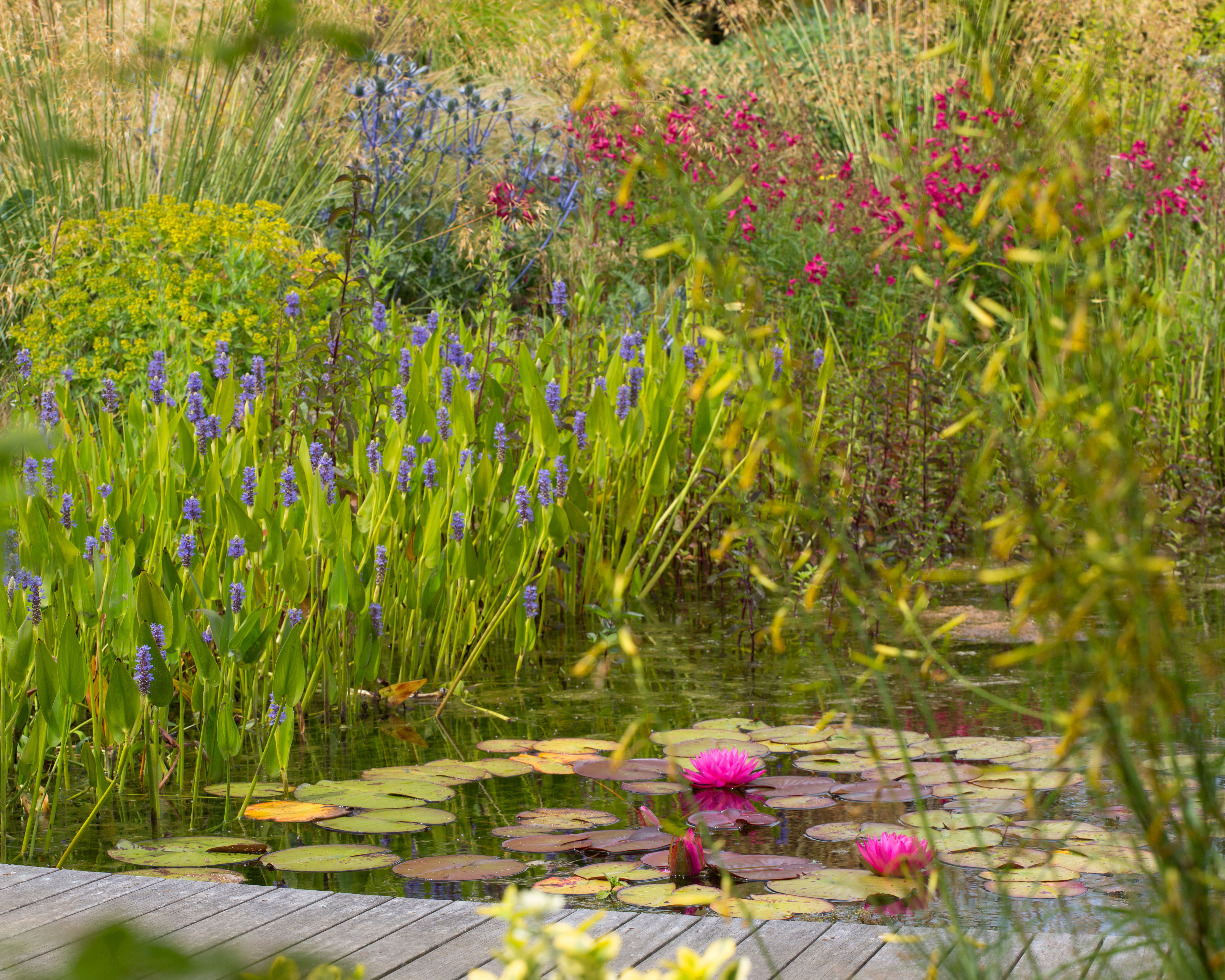
How to build a pond
When researching how to build a pond and investigating a garden pond, it is crucial to figure out what you want from your pond. Do you want something that is a haven for wildlife or perhaps just a reflective space? This will influence your backyard landscaping ideas as it will define the style and size of your pond.
There are many different ways to build a pond, however, the three most popular methods are using a pond liner; using a preformed base, or creating a container pond.
- Lined pond - the traditional method of pond construction, a lined pond starts life as a large hole, dug into the ground. Ensure there are no stones in the hole as these could pierce the liner, then coat the hole with sand. Next, build a trench around the outside of the pond to accommodate the edges of the lining. Then lay your pond liner in the hole and tuck the edges into the trench, using large rocks to weigh it down. The Wildlife Trust recommends using a pond liner that is made of butyl rubber. From here the liner is then smoothed flat and the pond is filled with rainwater. Backfill the trench with soil to secure the liner.
- Preformed - this method utilizes a plastic base, which is buried in the ground and is much easier and more convenient than lining your own. However, you are limited to the size and shape of your pond. To install, dig your hole, coat it with a layer of sand and then install and backfill around your preformed pond.
- Container pond - the easiest to create, any watertight container can be transformed into a pond. Simply fill with rainwater and add your plants, immersed in pond baskets. You can then create slopes in your pond by sinking rocks and old bricks.
After you've built your pond, the next step is incorporating it into your garden ideas and adding pond plants. Container ponds are the easiest to integrate as their appearance is predominantly provided by the container. This means that so long as the container you choose fits into your garden style, then your pond should fit perfectly into your scheme.
On the other hand, you have a lot more freedom to design the space around a sunken pond. Once built, the way you decorate is pretty much the same regardless of whether you used a liner or a preformed mold.
Consider edging your pond with rocks and alpine plants to create a rockery feel that is befitting of cottage garden ideas. Alternatively, you can try surrounding your pond with a more formal deck or paving which draws on patio ideas. For something more out-there, consider drawing on Japanese garden ideas when decorating around your pond. Ponds are a requisite feature of this design, so embrace elements of this reflective style of gardening and create a sanctuary in your backyard.
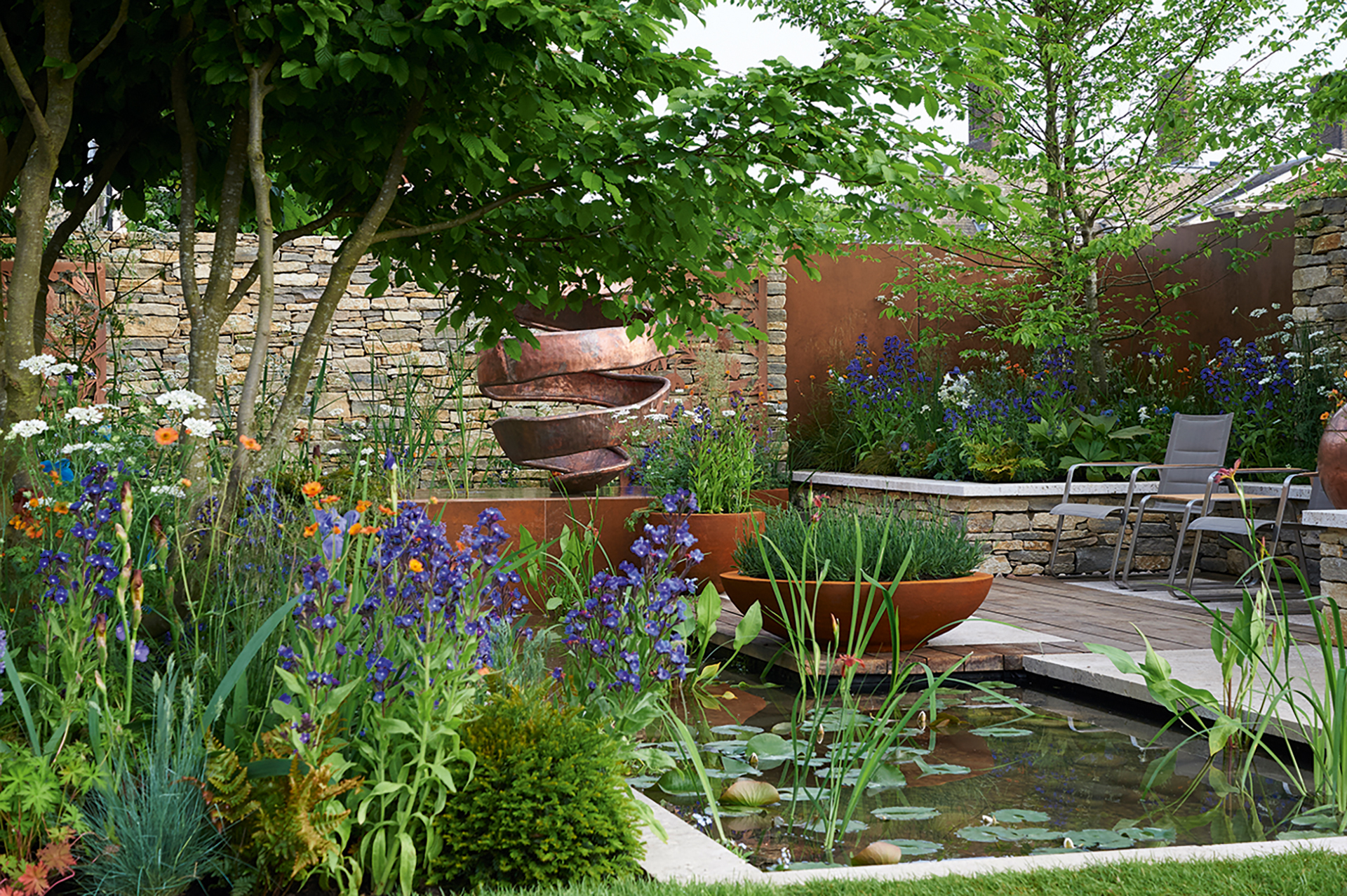
How to build a container pond
Finding out how to build a pond in a container is one of the quickest and easiest ways to build a pond in your backyard. In fact, you can turn almost any watertight container into a miniature wildlife pond. From troughs and buckets to barrels and urns, there is no size or shape that can’t be transformed into a haven.
The steps for how to build a pond in a container are really straightforward. Simply select your container, then sink stones and bricks to create slopes. Then fill with rainwater and immerse your chosen pond plants in pond baskets. Once you've figured out how to build a pond in a container, you can then incorporate it into your other container gardening ideas for a beautiful display.
Container ponds are also a brilliant way of gardening with children as they are much safer than a traditional pond, while still bringing the delights of frogs, tadpoles, and dragonflies into the garden.
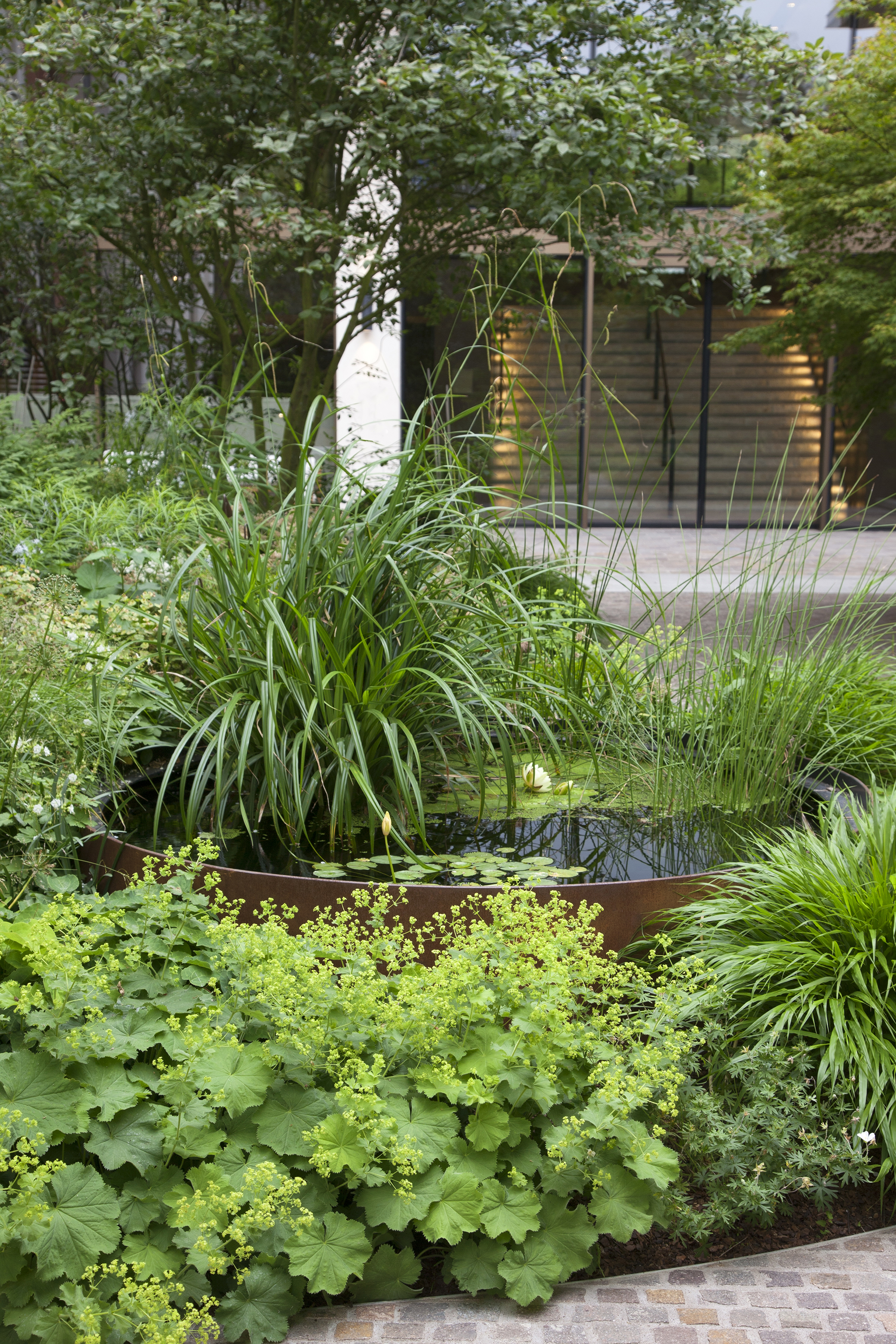
How deep should I dig a pond?
How deep you should dig a pond depends on what you want to achieve with it. If you are hoping to have fish in your pond then a depth of at least 20 inches and a minimum capacity of 2000 liters is recommended. However, if you are hoping to create a wildlife pond then shallower is better.
'A wildlife pond should have lots of shallow water – roughly 50% shallows, and the deep area is not more than 30 cm,' says Dr Jeremy Biggs, CEO at FreshWater Habitats Trusts 'Most garden ponds are too deep for their area: if you want a half meter deep pond, or deeper, it needs to be much bigger or you end up with very steep sides.'
The size of your pond will largely depend on the size of your garden, even a small pond is a beneficial addition both to wildlife and to your garden's aesthetics.
However, regardless of the size, 'it is important that you ensure that almost all pond slopes are shallow, less than 1:5 (12°) and preferably less than 1:20 (3°),’ continues Dr. Jeremy Biggs. Opting for sides at gentle angles will ensure that any animals that accidentally find themselves in the pond can escape.
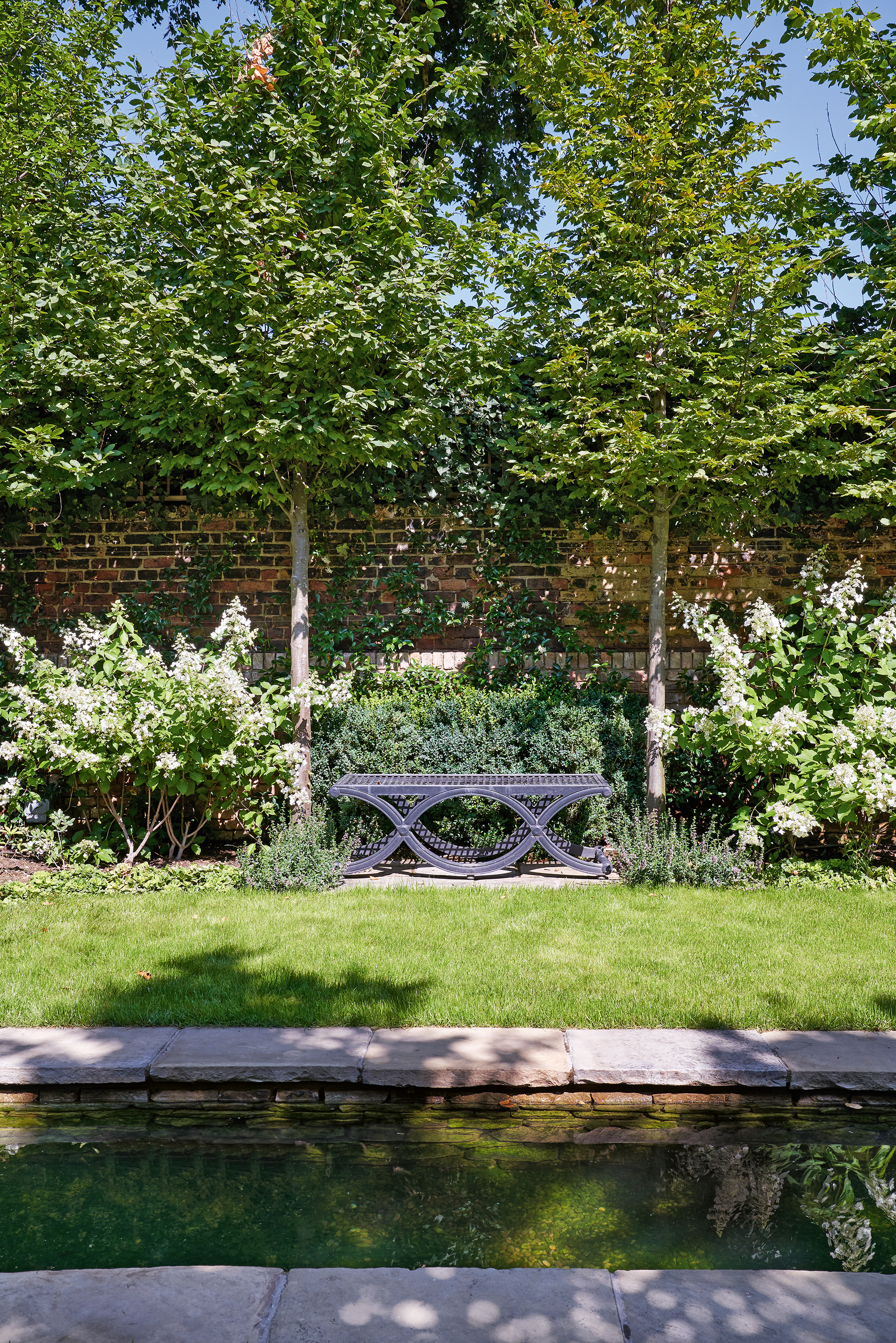
How to fill a pond?
For all ponds, filling them with the correct water is vital. The best option is rainwater, which has a pH level supporting the most extensive range of plants and wildlife. Start collecting rainwater in water butts before you begin to build your pond. You can then use this to fill your pond quickly and efficiently.
‘When topping up your pond it’s a good idea to use collected rainwater or tap water that has stood in a watering can for a few days to allow some of the chemicals to evaporate,’ recommends gardening expert Leigh Clapp.
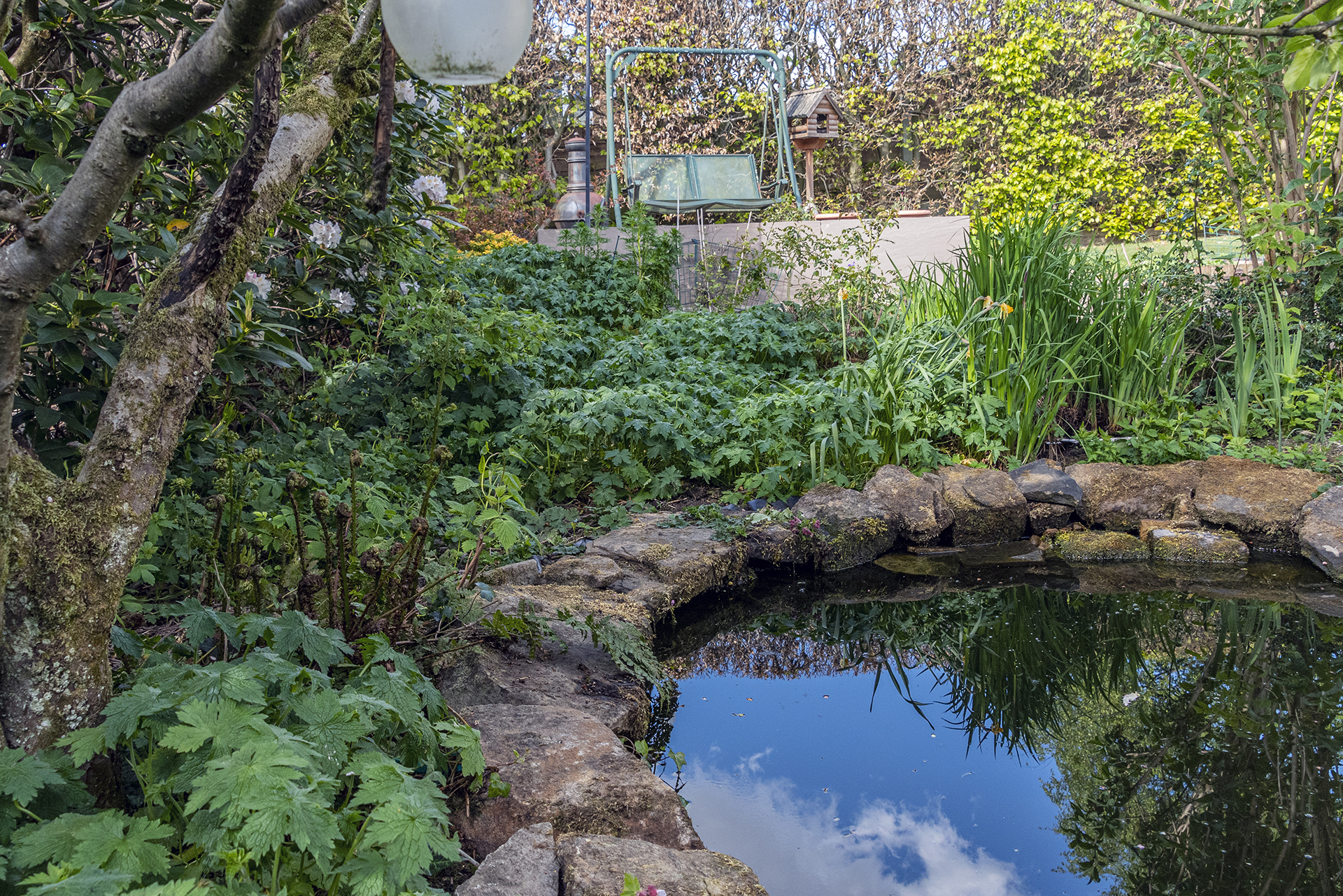
How do I get rid of green water in my pond?
Oxygenating and nutrient-absorbing plants are the best way to get rid of green water in your pond.
‘Green water is caused by algae. Although some algae are beneficial to the pond a sudden bloom can cause real issues. The key is trying to keep the nutrient level low and the water well-oxygenated,’ explains Ian Jelley, director of Landscape Recovery at Warwickshire Wildlife Trust.
Reducing nutrients can be achieved by ensuring plenty of plants absorb the nutrients between your borders (which are likely to be fertilized) and your pond. ‘Let the grass or other vegetation grow longer around your pond to intercept nutrients before they enter the pond. Some of the best pond plants include: rushes; Sedges; Water mint; Meadowsweet,’ adds Ian. ‘In the pond you can plant species like Common Reed which can help act as a filter, reducing nutrients and pollution.’
The second method is to increase the amount of oxygen in the water, the easiest way to achieve this is also with plants. Ian recommends varieties such as hornwort; marestail; spiked water-milfoil and water starwort. While adding native plants can help to remedy problems relating to algal bloom, it is important not to go overboard. ‘Keep your pond healthy by maintaining the natural balance. You should aim to keep around 50 percent of the surface free of vegetation by thinning out plants occasionally during the summer,’ Ian adds.
These ideas can also be used to keep natural swimming pools clean too.
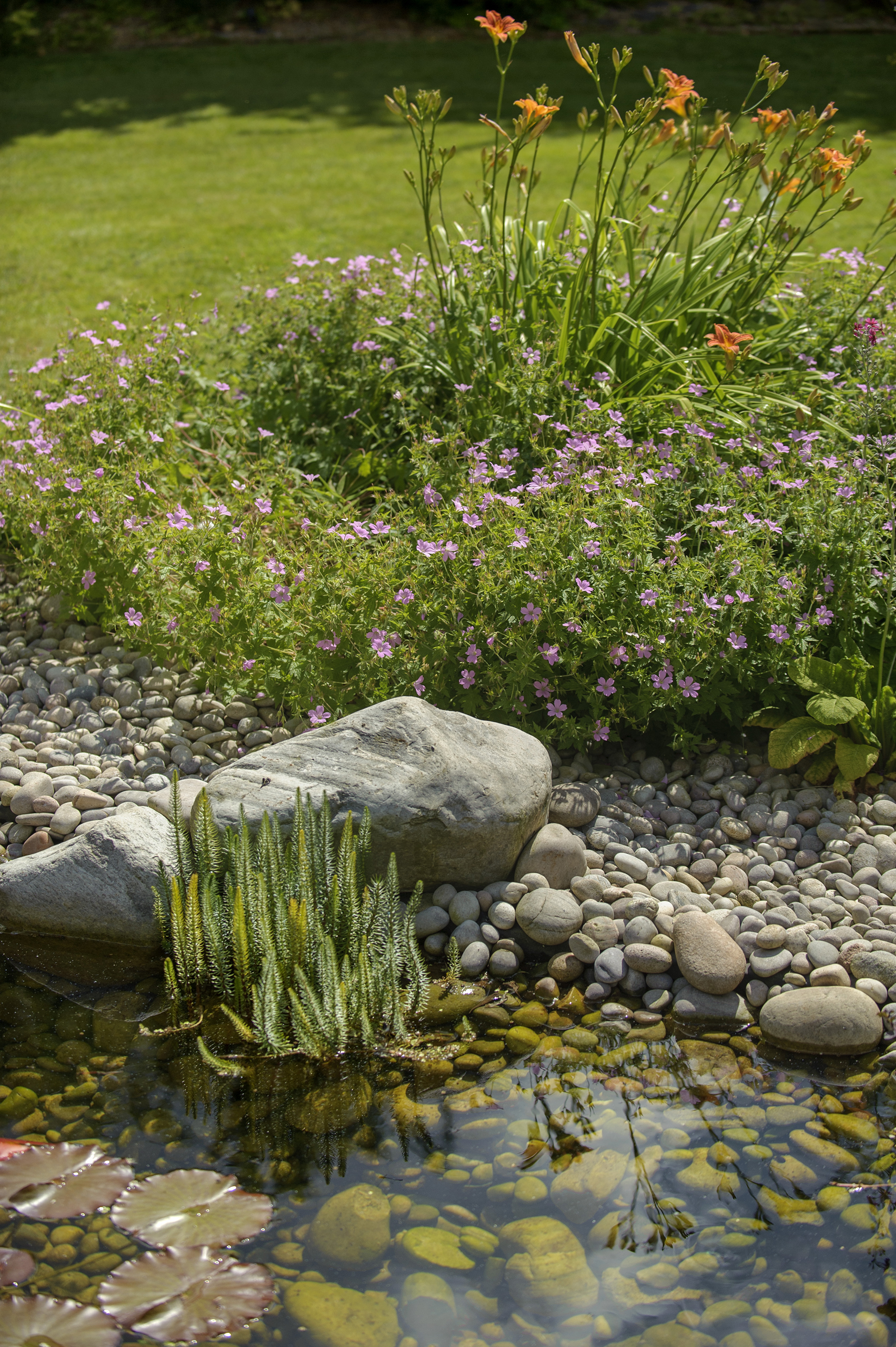
Is a pump necessary in a pond?
No, a pump is not necessary for a pond. ‘If you get the balance of native plants right, you shouldn’t need a pump. Ponds in the natural world don’t have pumps. In some situations, it may take a few years for the plants to establish and during that time you may experience algal issues,’ says Ian Jelley, director of Landscape Recovery at Warwickshire Wildlife Trust.
However, this doesn’t mean that pumps can’t bring an aesthetic benefit to your pond and help oxygenate the water. One of our favorite sensory garden ideas is to include a garden fountain that will look stunning when incorporated into a pond. ‘If a pump is used, though, then the critical thing is ensuring that the filter on the pump is fine enough to prevent wildlife from being sucked into it,’ says Ian.
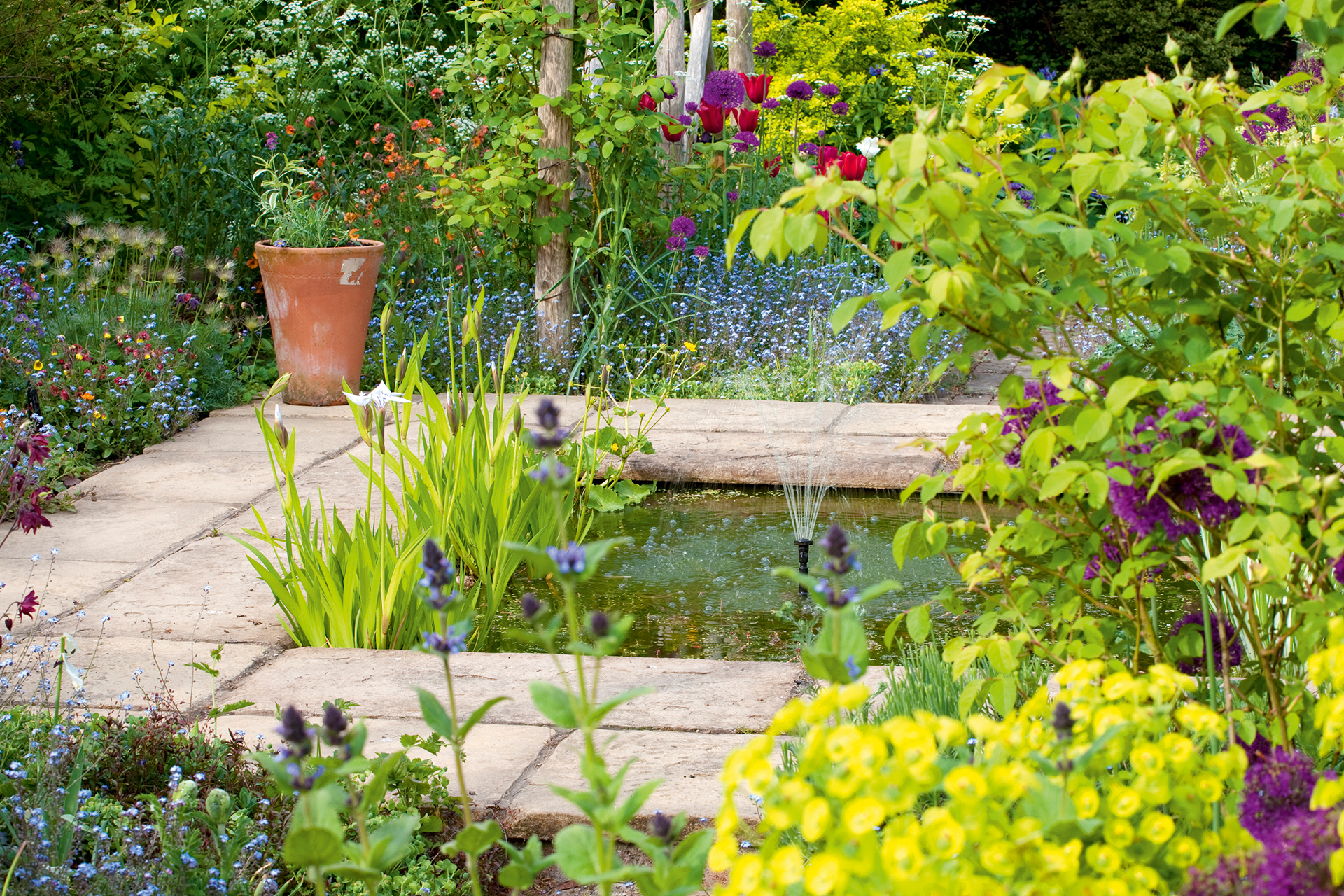
How to build a pond that is safe
With any sunken pond, safety is key, especially if you have children or pets.
The most traditional method is to surround your pond with a fence, however, this does come with aesthetic costs. Pond covers are also popular but they also come with aesthetic compromises and will restrict the amount of wildlife that can benefit from the addition to your backyard.
A pond grate, on the other hand, offers invisible protection. A simple plastic grid is installed just below the surface of the water meaning that if someone or something should fall in, it cannot sink. However, since the grate also has holes it doesn't have a detrimental effect on any wildlife that wants to enter the pond. Once the pond is full of water and plants have been added the grate becomes nearly invisible. You can find all types of pond grates at Amazon.
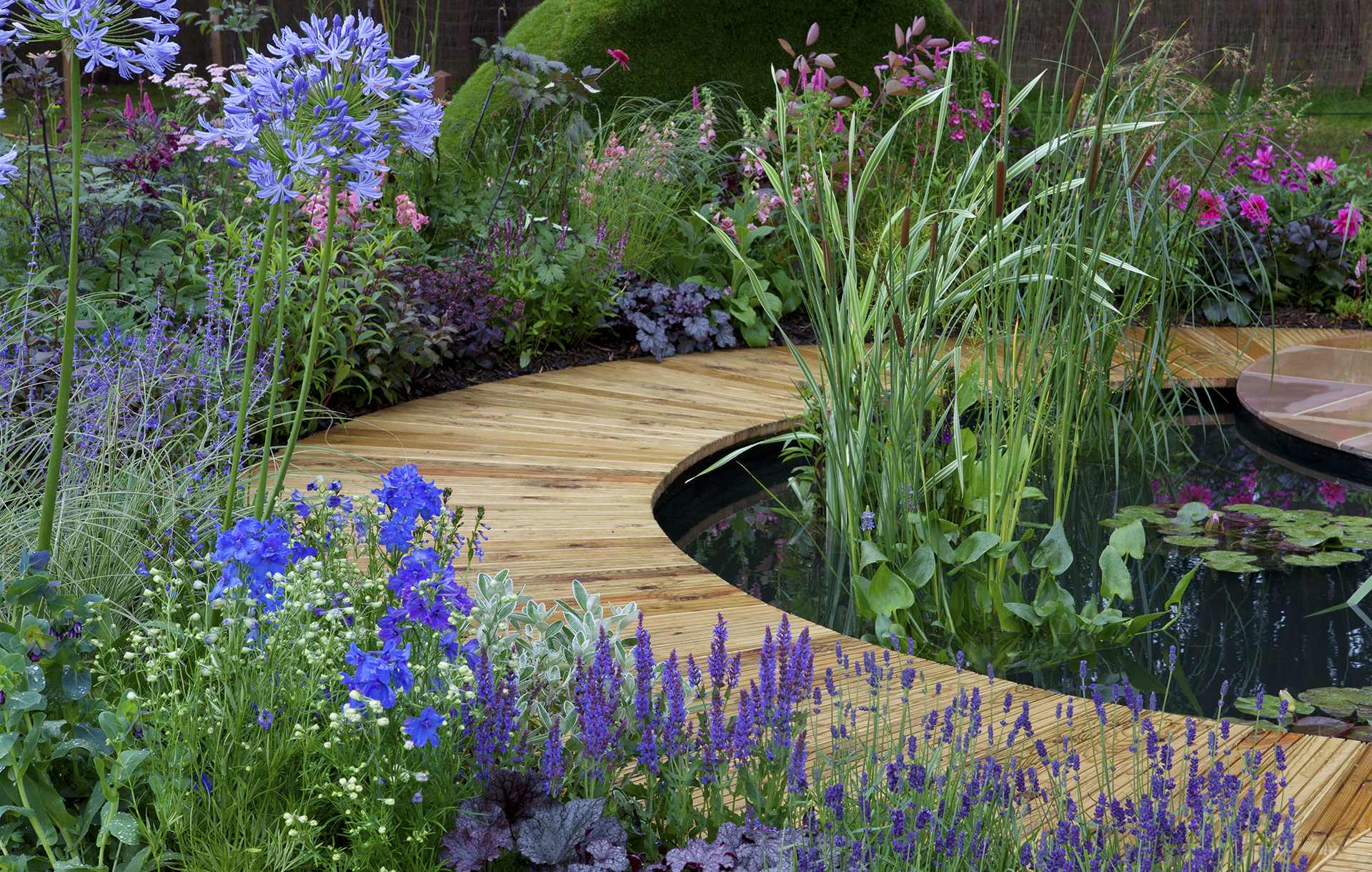
How do I attract wildlife to my pond?
Knowing how to build a pond is essential if you want to incorporate wildlife into your plot. Whether you create a small pond in a container or a large pond in your lawn, they will quickly become a safe haven for all sorts of wildlife.
‘Generally, wildlife can 'sniff out' water when it's there! Animals and insects will turn up, as if by magic and you could argue that those which come are those to support,’ says Barry Chambers founder of Garden Design Guru. However, there are a few things you can do to make your pond more appealing to wildlife.
Plants are a great way to encourage wildlife to your pond. ‘If you aim to cover around 50 per cent of your pond, they can do a great job at keeping the water cool and algae growth down,’ says experts from the RSPB. However, when selecting plants be sure to opt for a mix that offers food for pollinators as well as protective habitats or food for insects, amphibians, and mammals. ‘It is important to avoid invasive species like Canadian Pond Weed (Elodea canadensis) and those like Rushes (Typha species) which can puncture the liner,’ recommends Barry.
Also when thinking about how to build a pond, you must also consider whether you want to incorporate water feature ideas. Additions such as a fountain will not only provide a bubbling soundtrack to your garden but will also add visual interest and help to attract birds and wildlife to your pond.
There are many options for fountains, from those with pumps that help to aerate the water to solar options that simply float on the surface and recirculate the water below.
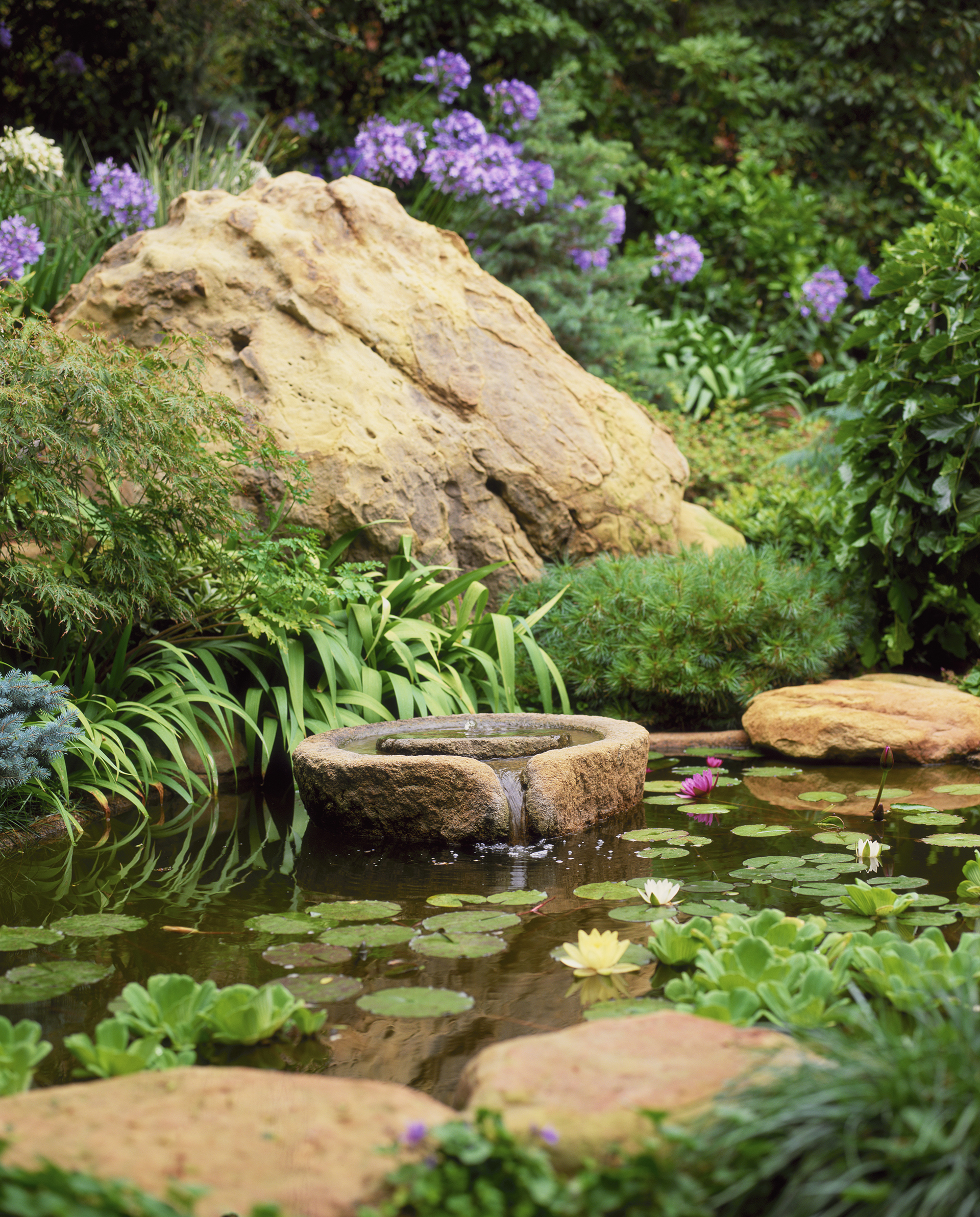
Can a pond be built anywhere?
Yes, a pond can be built anywhere. Though if you want to figure out how to build a pond as part of your small garden ideas, it might be better to opt for a container pond over a permanent structure.
You also need to consider the location of your pond. The optimum location would be one that receives between four and six hours of sunlight. However, it is better to have a pond in a less optimal location than to not have one at all.
The other key factor that will influence the site is how the pond is going to be fed water. ‘Although you may be able to pipe water from a roof to reach the pond this ideally does not want to be an afterthought – rainwater is best and of course, the sustainable way to go,’ says Barry Chambers founder of Garden Design Guru.
'Increasingly we need to consider what wildlife is already using the garden so as not to destroy existing habitats but ensure we add without subtracting. You could set up a wildlife trail camera to see if there are visitors which you don't know about, like hedgehogs for instance,' continues Barry.
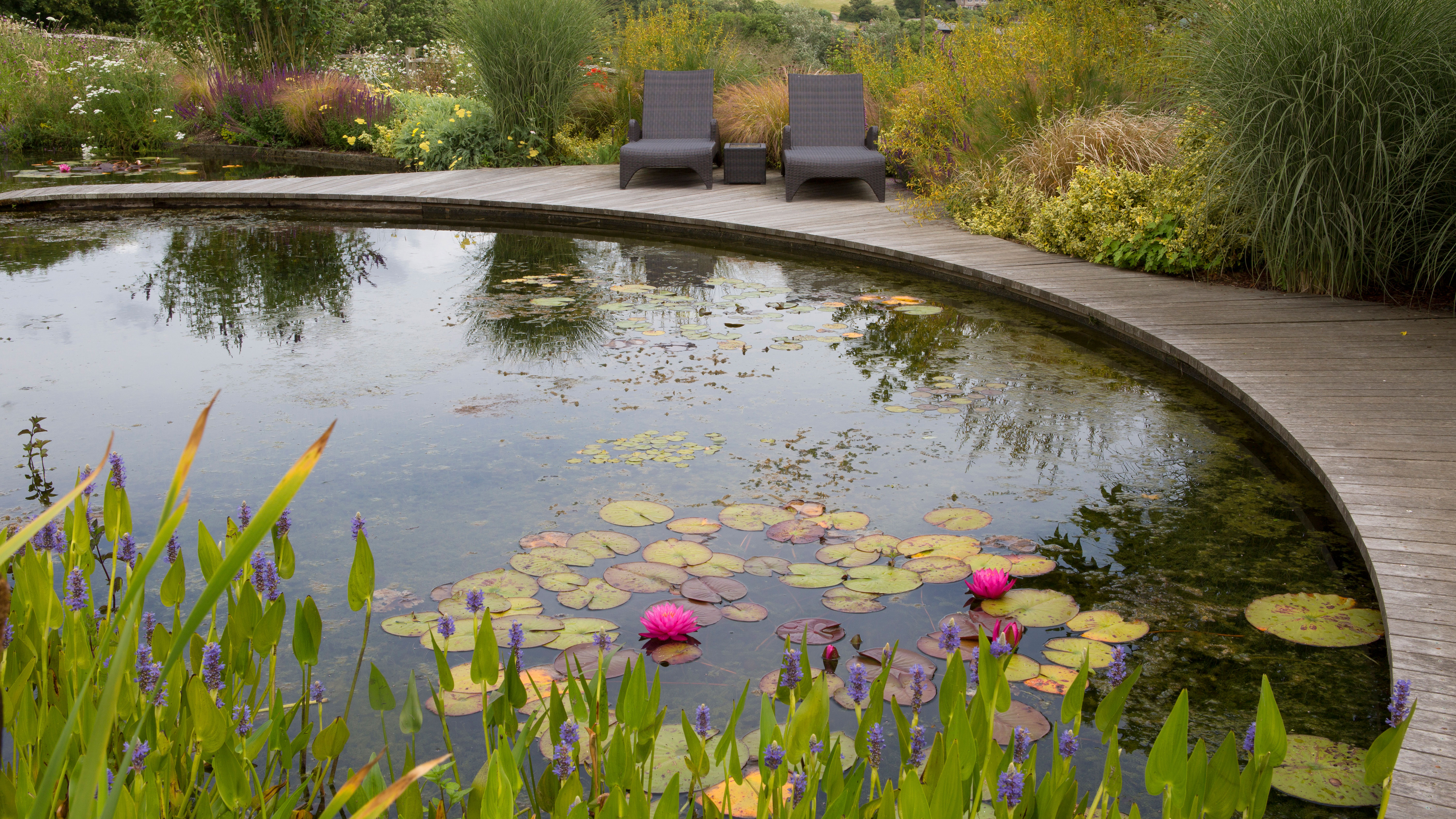
How to remove a pond
Total removal of a pond should always be a last resort. ‘Ponds are critical to all wildlife so avoid filling in a pond unless totally unavoidable. The decline in ponds in gardens and in the wider landscape has significantly contributed to the decline in our wildlife, this means that every garden pond has an invaluable role in nature’s recovery,’ explains Ian Jelley, director of Landscape Recovery at Warwickshire Wildlife Trust.
If you are concerned about the safety of the pond, look into methods to boost its credentials – try fencing, grates, or similar. If you don’t want to take on the burden of managing a pond, consider reimagining it as a low-maintenance bog garden that will be self-sustaining and invaluable to semi-aquatic wildlife.
However, if alternatives are proving impossible, ensure that your efforts to remove your pond have as little impact on wildlife as possible. ‘If a pond has to be filled in then the work should be undertaken in the autumn to minimize the disruption to wildlife. During this time of year, most species will have moved out of the pond into the terrestrial habitat. Any remaining animals can be relocated to a nearby pond – ideally less than a mile away.’
Never move pond plants or wildlife into local streams, rivers, or lakes as this can invite infection, disease, or non-native plants into the natural environment and can have severe long-term consequences. It is also worth noting that some fish and amphibians may also require a license or consent to move.
Sign up to the Homes & Gardens newsletter
Design expertise in your inbox – from inspiring decorating ideas and beautiful celebrity homes to practical gardening advice and shopping round-ups.

Having graduated with a first class degree in English Literature, Holly started her career as a features writer and sub-editor at Period Living magazine, Homes & Gardens' sister title. Working on Period Living brought with it insight into the complexities of owning and caring for period homes, from interior decorating through to choosing the right windows and the challenges of extending. This has led to a passion for traditional interiors, particularly the country-look. Writing for the Homes & Gardens website as a content editor, alongside regular features for Period Living and Country Homes & Interiors magazines, has enabled her to broaden her writing to incorporate her interests in gardening, wildlife and nature.
-
 7 of the best tomatoes for growing in pots - expert growers pick their top varieties ideal for large harvests from containers
7 of the best tomatoes for growing in pots - expert growers pick their top varieties ideal for large harvests from containersYou can enjoy bumper homegrown harvests in small spaces
By Drew Swainston Published
-
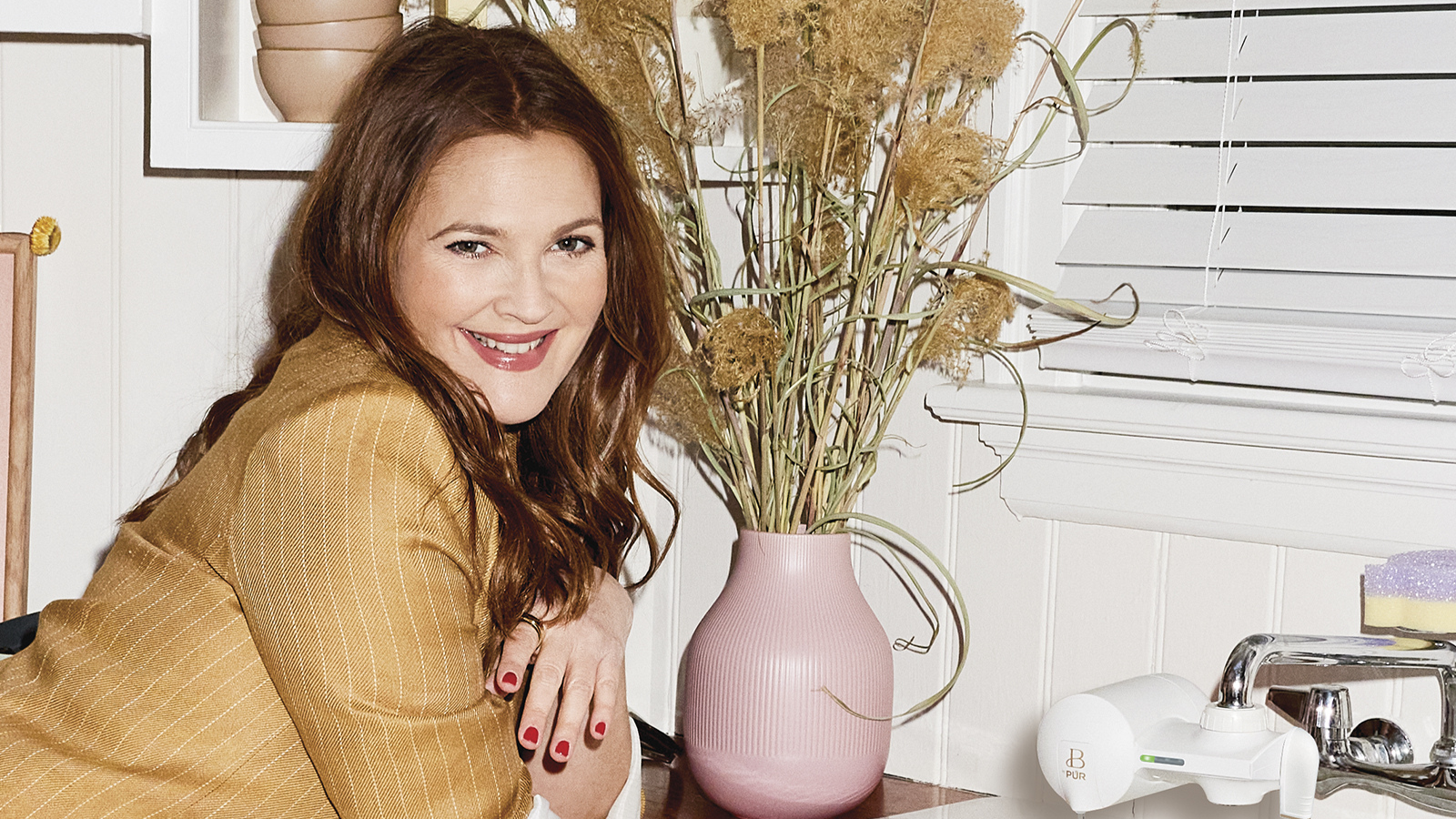 Drew Barrymore creates a 'balanced' kitchen in 4 easy steps – her rules will make your small, compact countertops feel beautiful
Drew Barrymore creates a 'balanced' kitchen in 4 easy steps – her rules will make your small, compact countertops feel beautifulDrew proves that with the right styling (and chic appliances), you can make even the smallest of kitchens look harmonious
By Hannah Ziegler Published
-
 Water garden ideas – 9 ways to introduce soothing water to your outdoor space
Water garden ideas – 9 ways to introduce soothing water to your outdoor spaceFrom cascading fountains to wildlife ponds, there are plenty of ways to create a tranquil water garden
By Leigh Clapp Published
-
 How to grow poppies
How to grow poppiesFind out how to grow poppies to enjoy the beauty of these brightly colored tissue paper-like blooms
By Leigh Clapp Published
-
 How to grow delphiniums from seed
How to grow delphiniums from seedFind out how to grow delphiniums from seed and enjoy these colorful cottage garden favorites filling beds and borders
By Leigh Clapp Published
-
 How to grow ferns – when and how to plant and care for them
How to grow ferns – when and how to plant and care for themLearn how to grow ferns to enjoy the texture and form of these versatile plants in many areas of your garden
By Leigh Clapp Published
-
 How to grow sweet peas from seed – in borders and pots
How to grow sweet peas from seed – in borders and potsFind out how to grow sweet peas and where to enjoy their wonderful color, ruffled blooms and sweet fragrance in your garden
By Pippa Blenkinsop Published
-
 How to make fat balls for birds – easy steps feed our feathered friends
How to make fat balls for birds – easy steps feed our feathered friendsLearn how to make fat balls for birds to ensure their wellbeing throughout the winter
By Holly Reaney Published
-
 Planning a kitchen garden – from layouts to picking the best crops
Planning a kitchen garden – from layouts to picking the best cropsPlanning a kitchen garden is easy with this expert advice – whether yours is in beds, borders or a dedicated patch – you're guaranteed success
By Leigh Clapp Published
-
 How to grow cosmos – expert tips on when and where to plant these flowers
How to grow cosmos – expert tips on when and where to plant these flowersLearn how to grow cosmos to add bright color in your garden from summer through to fall with their beautiful blooms
By Leigh Clapp Published